MISOJYU: A Unique Miso Soup Specialty Store Experience
Jul 15,2021
MISOJYU: A Unique Miso Soup Specialty Store Experience
Jul 15,2021
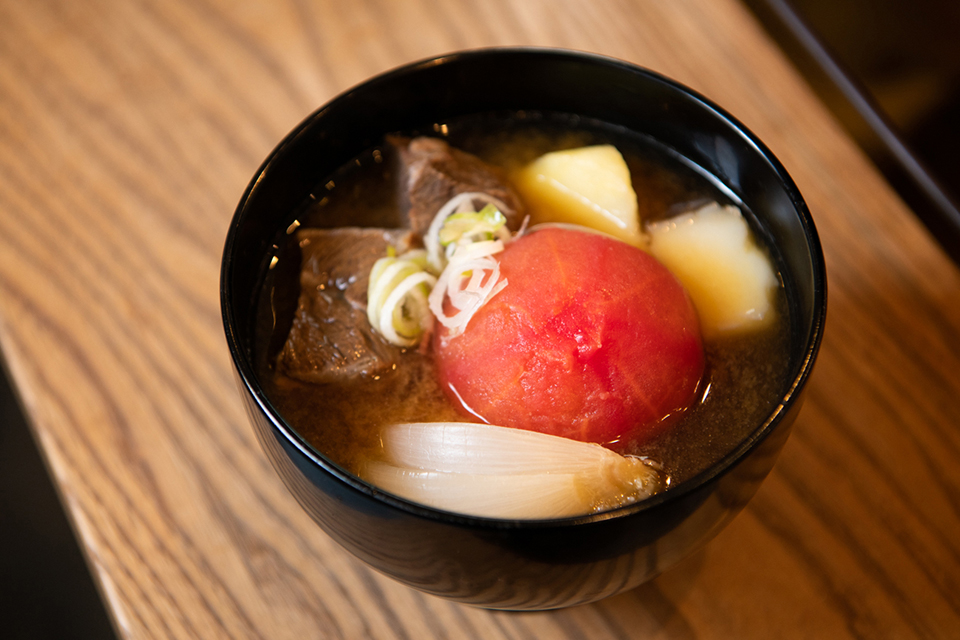

It goes without saying that Japanese people regard miso soup as soul food, but few have experienced going out specifically to dine on miso soup. Despite this lack of a miso-soup dining culture, the miso soup specialty shop Misojyu opened in 2018 on the corner of a shopping street just a stone’s throw from Asakusa’s Kaminarimon Gate. We spoke with Edward Hames, the food director who came up with Misojyu’s menu, about what first attracted him to miso soup and about his ideas on miso soup.
Asakusa is a popular sightseeing spot for inbound tourists and locals alike. Misojyu, which opened in the district as a specialty miso soup shop, looks so much like coffee stand that you wouldn’t notice, at first sight, that it serves miso soup. On the day of our visit, it was bustling with young female customers. The secret to the shop’s popularity is both the fermentation fad of the past few years and the makeup of its truly unique menu offerings. Misojyu’s founder Edward Hames is a man who wears many hats, including those of a musician, photographer, and restaurant chef. Naturally, we had to know why he decided to set up a miso soup shop in Japan.
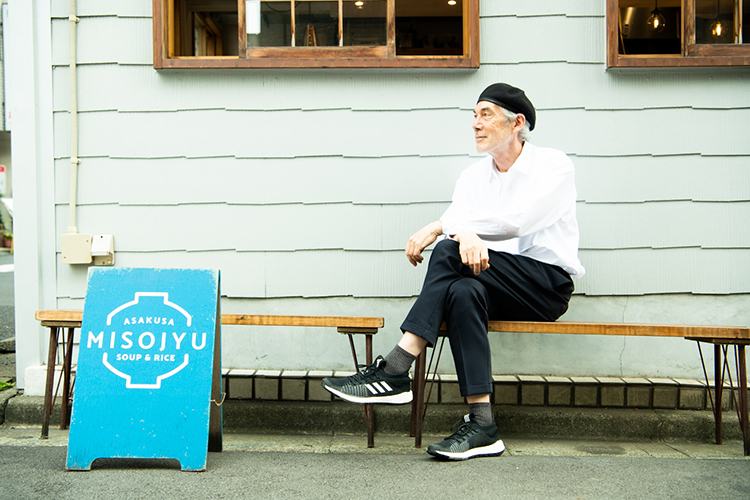
Edward relaxes on a bench seat outside his shop
“Well, my father is American and my mother is Japanese. As you might expect, having miso soup on the dining table was part of my daily life ever since I was a child. As the saying goes — temae miso [blow your own horn], each household in Niigata, where my mother is from, made their own miso. So, miso was nothing special to me when I lived in Japan. When I turned 18, I moved to California because I wanted to be a musician. I went to college in New York, but I found myself taking photos as I traveled back and forth to Japan. Photography was what started me down the food business path. As I photographed top restaurants all over the world, I got more and more interested in the ingredients and the food itself.”
Edward later worked as a chef for eight years at a French-Vietnamese restaurant in Santa Monica. The more he learned about the world of food, the more he appreciated the excellence of Japanese cuisine, which he had used to take for granted. Around that time, he had a fateful encounter.
“On a flight to Japan, I happened to come across the work of the calligrapher Takeda Souun. I was so impressed that I reached out to him. The two of us hit it off, as I was living on the West Coast where organics were thriving, and he had a growing interest in organic food. After keeping in contact for a few years, we decided to open an organic café in Japan. Later on, as we put together a plan for a second shop, Japan’s culture of fermentation came to mind. We decided to create a miso soup shop to shine a light on miso soup, which had played only a supporting role even in fermentation culture. Given the character of the Asakusa area, we opened Misojyu here to convey the wonder of miso to both inbound visitors and local Japanese.”
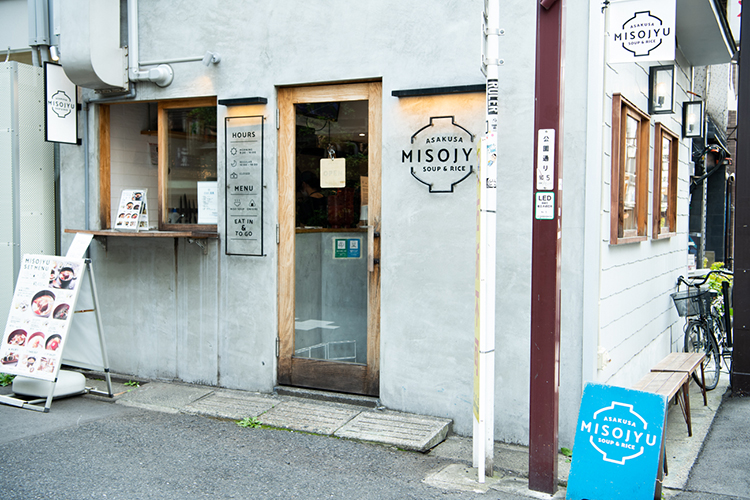
The eye-catching exterior of Misojyu resembles a café on a downtown corner

The second floor is an eat-in space decorated with works by Takeda Souun
Because miso soup is strongly associated with breakfast, Misojyu opens its doors at 8 a.m. Before the COVID-19 restrictions on the entry of overseas travelers, the shop was buzzing from the early morning hours with overseas tourists seeking to experience Japan’s food culture.
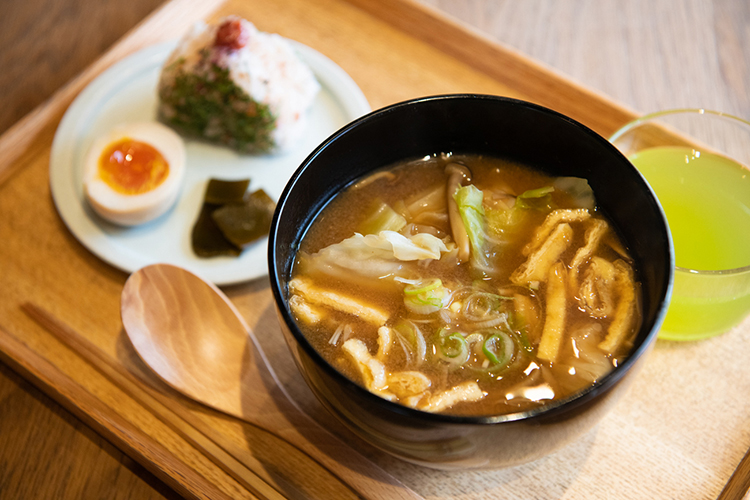
The breakfast special is served from 8 a.m. to 10 a.m.
“Before the COVID-19 pandemic hit, we had many customers come in from literally all corners of the world. Asakusa is absolutely quiet now, but we’ve been getting more business people and young women recently. This is a delight to me, because I want people who don’t normally have miso soup to enjoy eating it.”
Misojyu’s menu was developed based on the novel concept of having miso soup as the main dish. The menu offerings overflow with originality: Tomato & beef miso pot-au-feu, White miso soy & scallop potage, and Chunky vege & pork tonjiru. The shop serves many dishes that exhilarate both overseas visitors and Japanese customers.
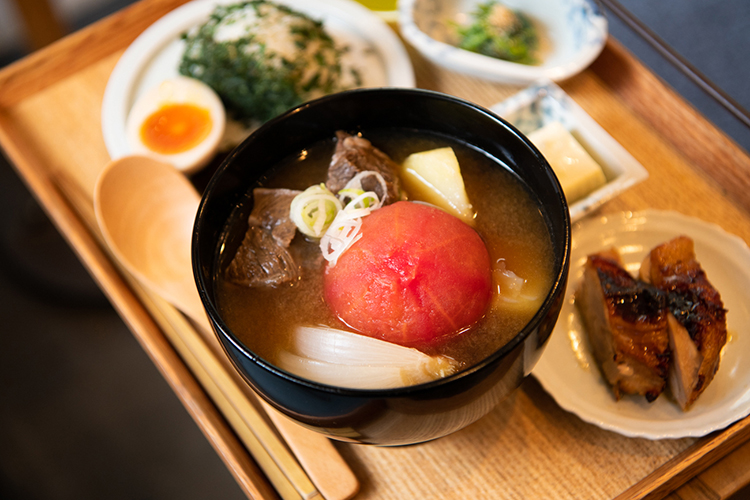
The acidity of tomatoes goes perfectly with miso in Tomato & beef miso pot-au-feu
“You can find miso soup in high-end Japanese restaurants overseas, but most non-Japanese are not very familiar with miso soup. We began designing the recipes with the question: ‘How can we broaden the scope of miso soup and make it easier for people to appreciate it?’ That’s why we decided to incorporate elements familiar to non-Japanese, such as pot-au-feu and clam chowder. Japanese people might be astounded that we put tomatoes in miso soup, but it’s one of our best-sellers. There are dozens of kinds of miso, and it’s surprising how well miso goes with nearly any type of food. I find miso to be a very flexible ingredient.”
Another thing Misojyu is picky about is filling the bowls with lots of chunky ingredients. When your order arrives at your table on a tray, the size of the enormous bowl will probably surprise you.
“Because miso soup is the star of the meal, we make the servings large enough so a single bowl as the main dish will satisfy customers. The ingredients are kept as chunky as possible so guests can fully relish the ingredients. What sets us apart from homemade miso soup is the time and trouble we take with each ingredient. For example, we stew the kakuni [cubes of meat or fish] slowly for hours. We also select the type of miso to match the ingredients. We have seasonal specials as well, so guests can enjoy the flavors of each season. We’re planning a soup with green papaya and kimchi this summer. These ingredients are good for digestion and perfect for the hot weather.”
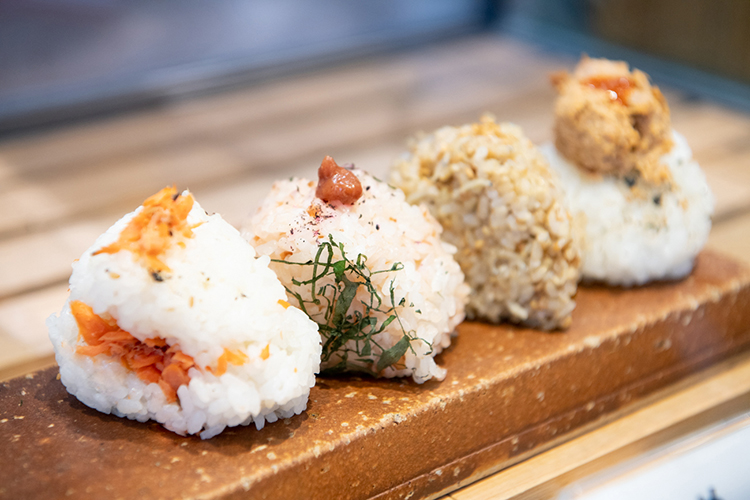
Onigiri rice balls to accompany miso soup: [from left] Grilled salmon, Pickled plum, Brown rice, and Spicy tuna
Because Misojyu got its start with organic food, the shop uses large amounts of select ingredients, primarily organic vegetables. Even the rice used in the onigiri rice balls, offered as sides, is an original blend of organic rice. All the items highlight Edward’s unbounded originality that comes from his many experiences, such as the French sea salt rice balls sprinkled with powdered tencha green tea — the base ingredient of matcha, and Spicy tuna rice balls that non-Japanese love. The seasonal miso soups inspired by seasonal ingredients are a fun experience that will turn your image of everyday miso soup on its head.
Misojyu celebrated its third anniversary this year, and the team opened the new Misojyu Select shop in April. Misojyu Select offers an array of traditional ingredients from all over Japan, such as the miso used in Misojyu’s soups and choice tofu varieties that are served in small bowls as part of the shop’s specials.
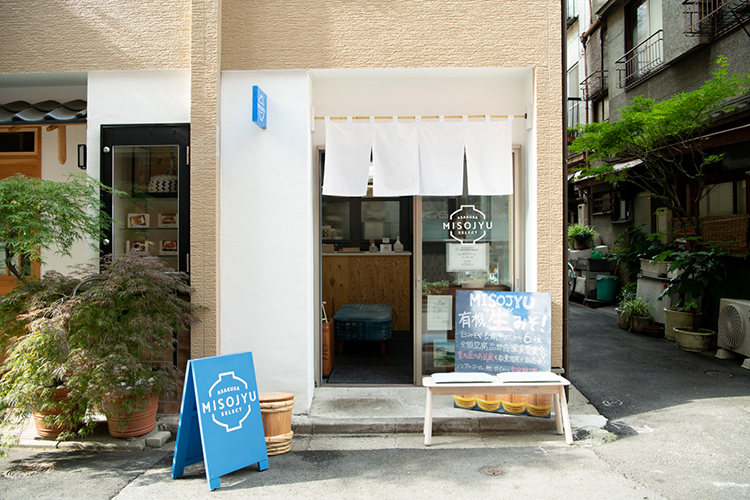
Misojyu Select is just a few meters from the main Misojyu shop
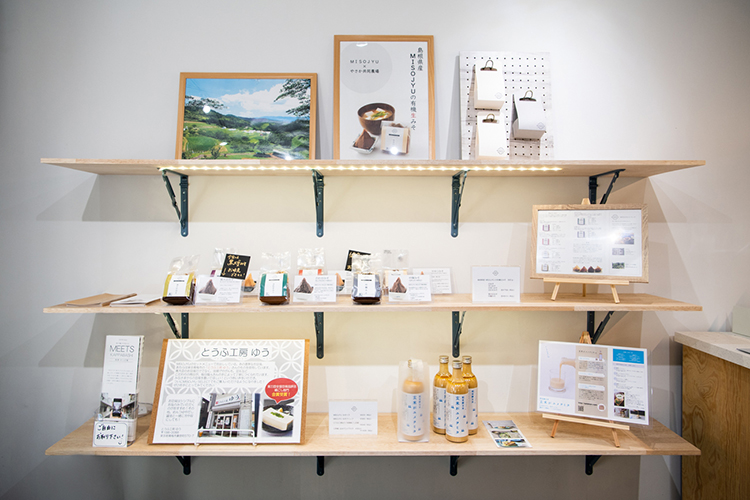
Select goods that are perfect as souvenirs or gifts
Misojyu Select is a new endeavor by Misojyu to get people to enjoy their select ingredients more casually, even at home. Edward also outlined what he wants to do in the future.
“When I lived in the States, I was always craving the Japanese food I had grown up eating. After I started working as a cook, I became reacquainted with the attraction and deliciousness of Japan’s unique fermented foods. Now that I’ve been in Japan for an extended period for the first time in many years, I’ve become even more interested in traditional Japanese food. I hope to study more about traditional Japanese food, especially how people used to eat long ago and what kind of fermented foods exist in different parts of the country.”

“I’m hopeful that young people will try out new things while carrying on traditions, like the miso we use at Misojyu. I would like to support the endeavors of such young people. I’d also like non-Japanese people to learn more about Japan’s wonderful traditional foods, and I would be even happier if they become more familiar with this food culture that the Japanese prize so much.”
Edward has followed his interests and broadened his horizons, while taking on many different challenges. He has been exposed to various countries’ food cultures and experienced the very best cuisine at starred restaurants in France and distinguished Japanese inns, only to finally arrive at a bowl of miso soup.
Edward has fostered hundreds of encounters with miso soup — people tasting miso soup for the first time ever at Misojyu and people rediscovering its charm. From a small space in downtown Tokyo, again today he is promoting Japan’s fermentation culture through miso soup.
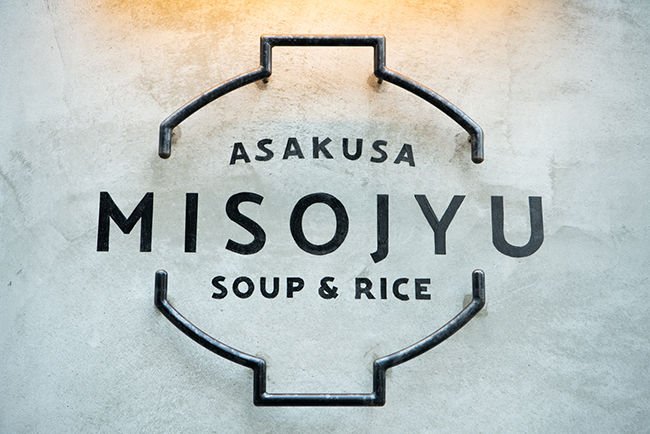
Note: Opening hours and days are subject to change due to the COVID-19 pandemic. Please contact the shop for more information.